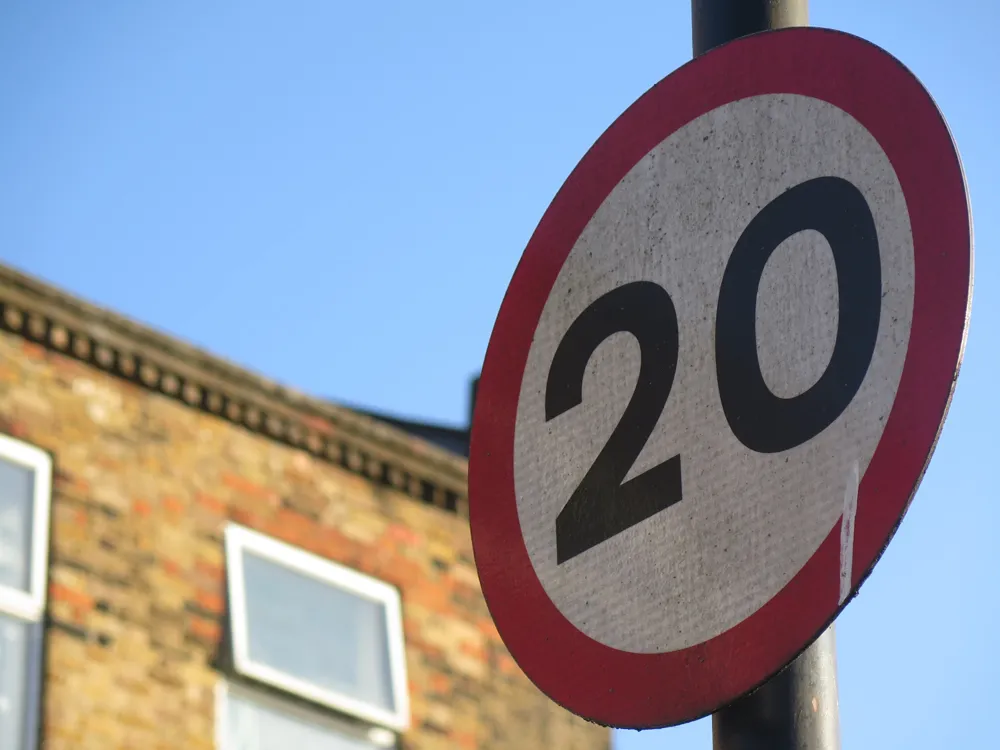Having already cut traffic collisions resulting in injuries and deaths by nearly forty per cent in five years by analysing patterns from data it has collected, the city of Edmonton, Canada, is using predictive technologies to increase road safety even more. The city’s Office of Traffic Safety (OTS) has installed as many as 200 digital signs as just one element of an innovative traffic safety program that has dramatically reduced vehicle collisions in the Edmonton region since OTS launched in late 2006. Unde
March 25, 2013
Read time: 3 mins
Having already cut traffic collisions resulting in injuries and deaths by nearly forty per cent in five years by analysing patterns from data it has collected, the city of Edmonton, Canada, is using predictive technologies to increase road safety even more.
The city’s Office of Traffic Safety (OTS) has installed as many as 200 digital signs as just one element of an innovative traffic safety program that has dramatically reduced vehicle collisions in the Edmonton region since OTS launched in late 2006.
Underpinning this effort is data analytics. Having used analytics to do everything from identify dangerous road design to predict poor driving conditions, OTS plans to integrate multiple data sources so it can create a comprehensive real-time picture of city traffic.
Executive director of OTS, Gerry Shimko, says it has two main focuses: speed management; and research into road user behaviour, urban traffic safety and data analytics.
“One of our fundamental principles in the office is an evidence-based approach to traffic safety,” Mr Shimko says. “You need to have statistically significant analytics to augment that kind of approach.”
OTS uses data analytics to pinpoint parts of the city’s infrastructure where there were more collisions, finding that thirty per cent of collisions took place at major intersections, which had dedicated lanes for making right turns, which could reduce visibility for drivers.
The city moved to a more flexible approach that lets OTS consider factors such as what kinds of vehicles and how many pedestrians use a particular intersection, replacing perilous right turn lanes with different types that improve visibility.
In addition to looking for existing patterns to improve traffic safety, OTS has begun to investigate predictive analytics, looking at weather modelling to predict collision trends based on weather conditions.
OTS works with the Edmonton Police Service on several initiatives to reduce speeding and other traffic violations. It is also working with the University of Alberta’s Centre for Smart Transportation on a project to improve traffic flow on a major east-west artery whose 100,000 daily vehicles make it the city’s busiest traffic corridor.
Looking ahead, OTS wants to establish a transportation intelligence centre, Mr Shimko says. His office is looking at buying a platform that would let it bring together information from road sensors, closed-circuit TV cameras and other data sources to provide what he calls real-time situational awareness.
The city’s Office of Traffic Safety (OTS) has installed as many as 200 digital signs as just one element of an innovative traffic safety program that has dramatically reduced vehicle collisions in the Edmonton region since OTS launched in late 2006.
Underpinning this effort is data analytics. Having used analytics to do everything from identify dangerous road design to predict poor driving conditions, OTS plans to integrate multiple data sources so it can create a comprehensive real-time picture of city traffic.
Executive director of OTS, Gerry Shimko, says it has two main focuses: speed management; and research into road user behaviour, urban traffic safety and data analytics.
“One of our fundamental principles in the office is an evidence-based approach to traffic safety,” Mr Shimko says. “You need to have statistically significant analytics to augment that kind of approach.”
OTS uses data analytics to pinpoint parts of the city’s infrastructure where there were more collisions, finding that thirty per cent of collisions took place at major intersections, which had dedicated lanes for making right turns, which could reduce visibility for drivers.
The city moved to a more flexible approach that lets OTS consider factors such as what kinds of vehicles and how many pedestrians use a particular intersection, replacing perilous right turn lanes with different types that improve visibility.
In addition to looking for existing patterns to improve traffic safety, OTS has begun to investigate predictive analytics, looking at weather modelling to predict collision trends based on weather conditions.
OTS works with the Edmonton Police Service on several initiatives to reduce speeding and other traffic violations. It is also working with the University of Alberta’s Centre for Smart Transportation on a project to improve traffic flow on a major east-west artery whose 100,000 daily vehicles make it the city’s busiest traffic corridor.
Looking ahead, OTS wants to establish a transportation intelligence centre, Mr Shimko says. His office is looking at buying a platform that would let it bring together information from road sensors, closed-circuit TV cameras and other data sources to provide what he calls real-time situational awareness.










